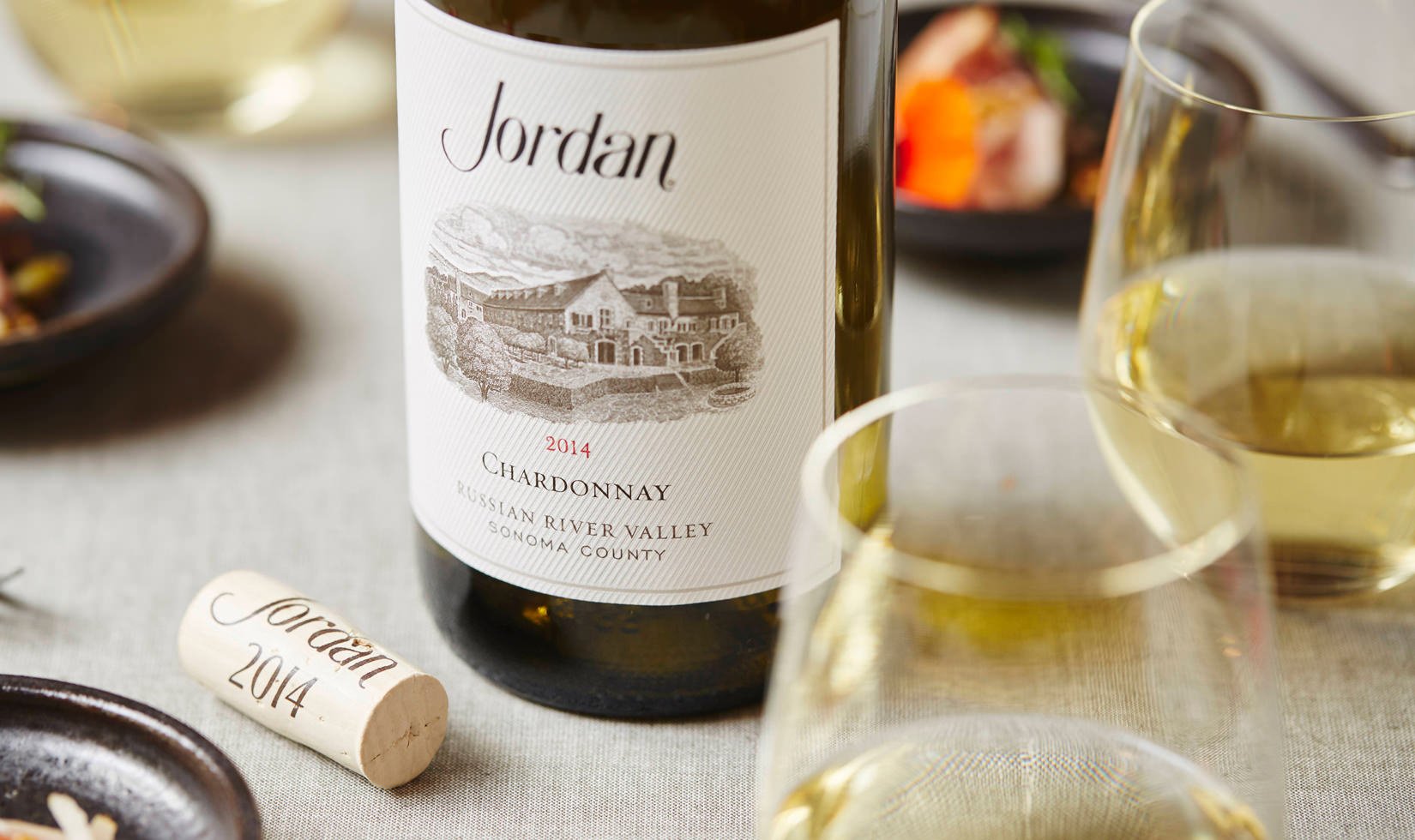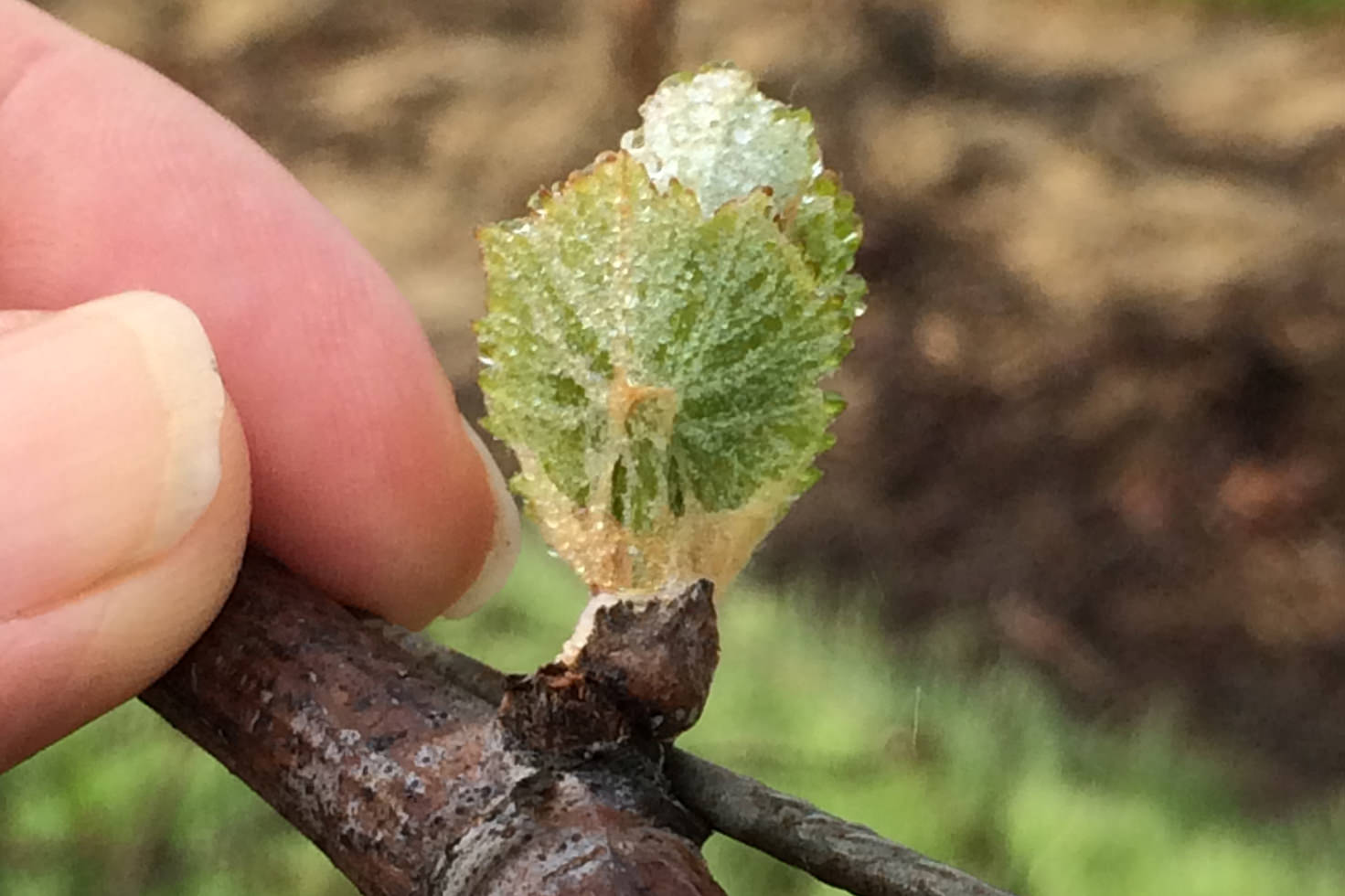Next week, the 2014 Jordan Chardonnay will make its debut–two months earlier than past vintages’ national release. With the addition of our new bottling line, both Jordan wines are expressing more complex bouquets sooner, and Winemaker Rob Davis gave us the green light to release them now. His 2014 Russian River Valley Vintage Report offers an in-depth look at the harvest and its resulting wine.
Growing Season
There is the old adage, “good things come to those who wait,” but the 2014 growing season in Sonoma County was the exception to this, when “good things” came early all year long—bud break, flowering, veraison and harvest. With the exception of two long, steady storms in December and February, winter was unseasonably dry—an occurrence that has become all too familiar during this historic drought. Fortunately, those rains helped bring reservoir levels up to around 50% of average, which was a significant improvement over the record-dry 2013. The little rain that did fall also came at precisely the right time, with six inches right before bud break, bringing needed water to otherwise parched vines. Warm temperatures in January and March, with a cooler February respite, led to bud break beginning a week earlier than usual around March 12-14. Days in early March were unseasonably warm and sunny, with the vine’s shoots bursting like solar panels to take in the plentiful sunshine. A warm, relatively dry spring through April and May meant swift flowering, a key component in the making of a great vintage, hindered by only a few days of wet weather and a cold snap. Bloom was complete in our Chardonnay vineyards by May 6, two weeks early. 2014 was the most even flowering of the vines Winemaker Rob Davis has seen in 40 harvests at Jordan. Mother Nature continued to smile on farmers with no wind or rain during fruit set, leading to exemplary, even fruiting of the vines. Extremely dry weather continued throughout July and August, though consistent temperatures and very few excessive heat spikes yielded an even, well-developed crop without any sunburn on the grape skins. Two weeks of cool, foggy weather at the end of August were followed by a heatwave over Labor Day weekend, kicking harvest into gear in early September, almost two weeks early. Though a dry and somewhat challenging growing season, the payoff marked 2014 as a three-peat winner of exemplary fruit, following the back-to-back stellar vintages of 2013 and 2012.
Vineyards
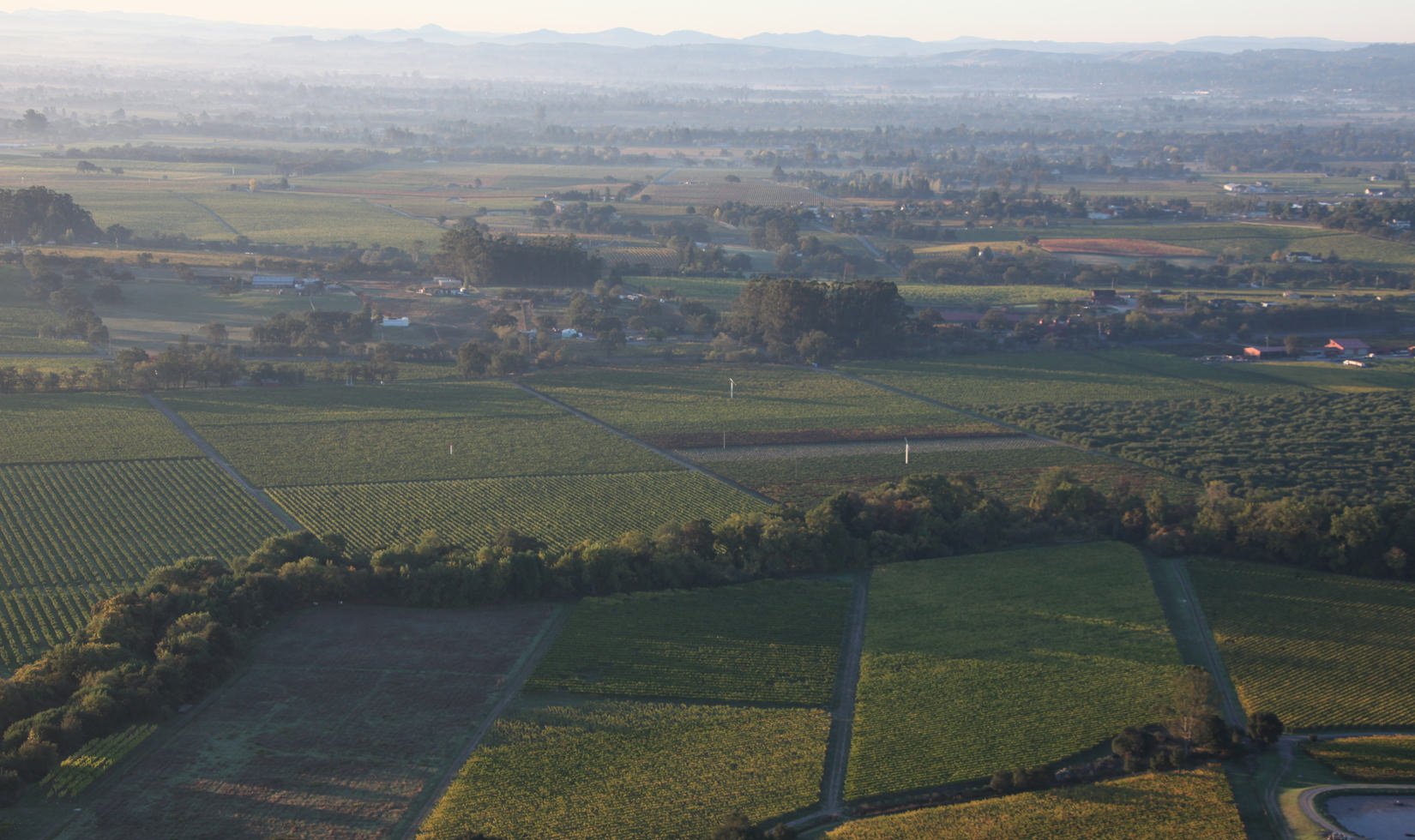
The final blend of 2014 Jordan Chardonnay began with a dozen different vineyard blocks from five sites on the east side of the Russian River. Two factors are paramount in the selection of our growers: vineyard sites with moderately cool temperatures that allow for lively fruit and crisp acidity and well-drained, gravelly soils that provide both physiologically mature fruit and mineral characters in the finish of the wine. It is this necessary combination of climate and soil that shares a common thread with the White Burgundies that inspire our style of winemaking.
Viticulture
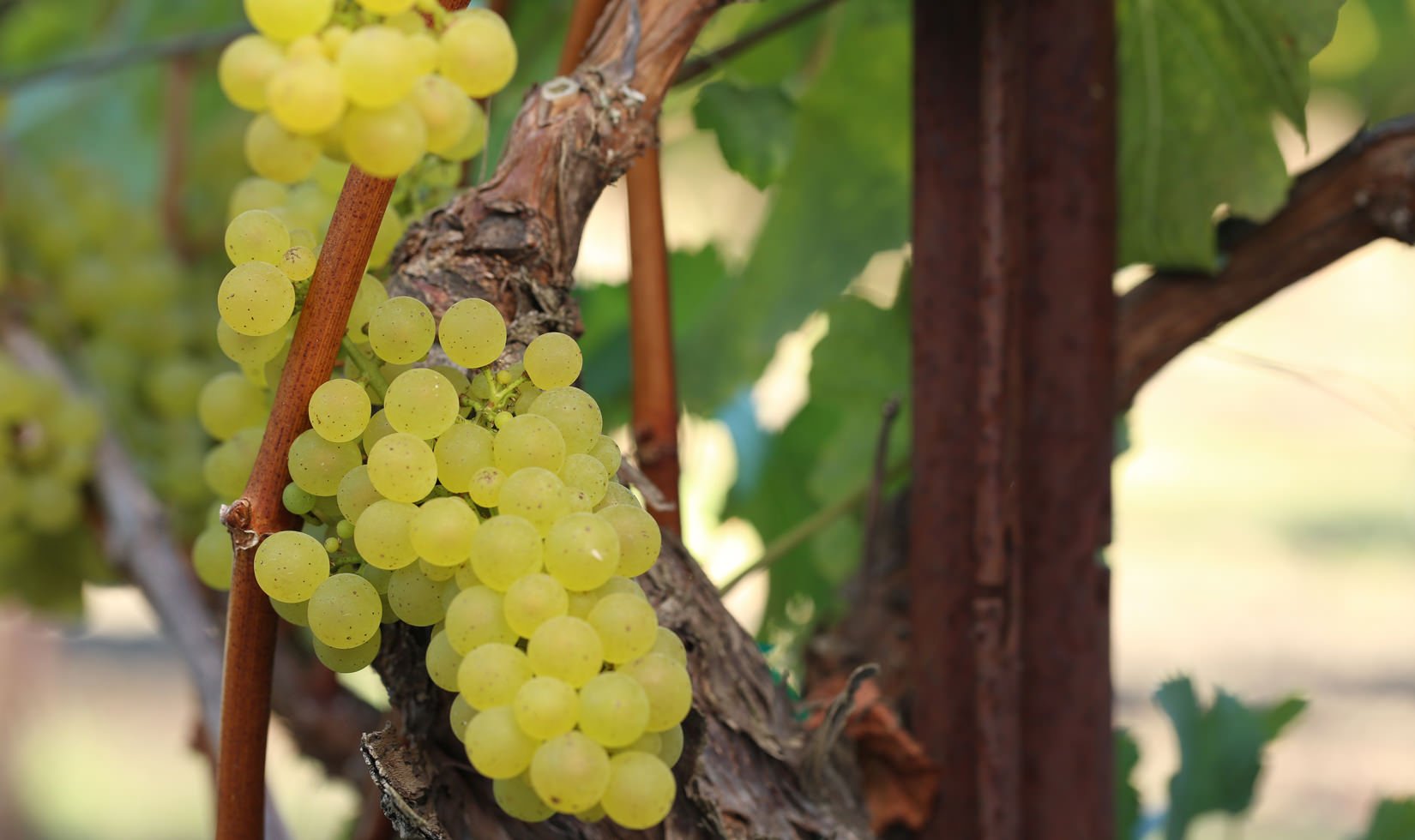
Due to the historic drought, strategic adjustments were made to our precision farming techniques. Pruning was delayed into January in an effort to delay bud break so that bloom would be later in the spring when frost is less likely. (In drought years, morning temperatures are much lower with the absence of rain, increasing risk of frost damage.) Despite the later pruning, bud break still occurred quite early, but vineyards were spared any frost. We also began judicious irrigation in January to get some moisture into the soil profile of the vineyards; the deep watering of about 2-3 feet down so that the grapevines’ roots have enough water for the growth boost they need when awakening from dormancy. This technique continued into early spring, and when coupled with several inches of much-needed rain, gave the vines enough water to help their growth progress quickly and smoothly during bud break, flowering and fruit set. Throughout spring, we worked closely with our growers on grapevine canopy management strategies to make sure the plants could handle the possibility of having very little water during the summer. Keeping the canopies of the plants small and manageable was key during this somewhat dry vintage after a very dry one. In an effort to mitigate the long-term effects of these continued dry conditions in our vineyards, Ranch Manager Brent Young also installed small devices amongst the vines called Evapotranspiration transmitters to track specific vineyards’ water consumption. This technology allowed us to track and understand changes from year to year in the vines’ water consumption rate, yielding valuable data that allows us to truly pinpoint where best to utilize our precious water resources. In some ranches, we added an extra trellis wire to help shade the clusters and prevent sunburn. Thanks to a blend of our pruning practices, meticulous farming decisions and consistent temperatures, we managed to overcome one of the driest growing seasons on record relatively unscathed.
Harvest
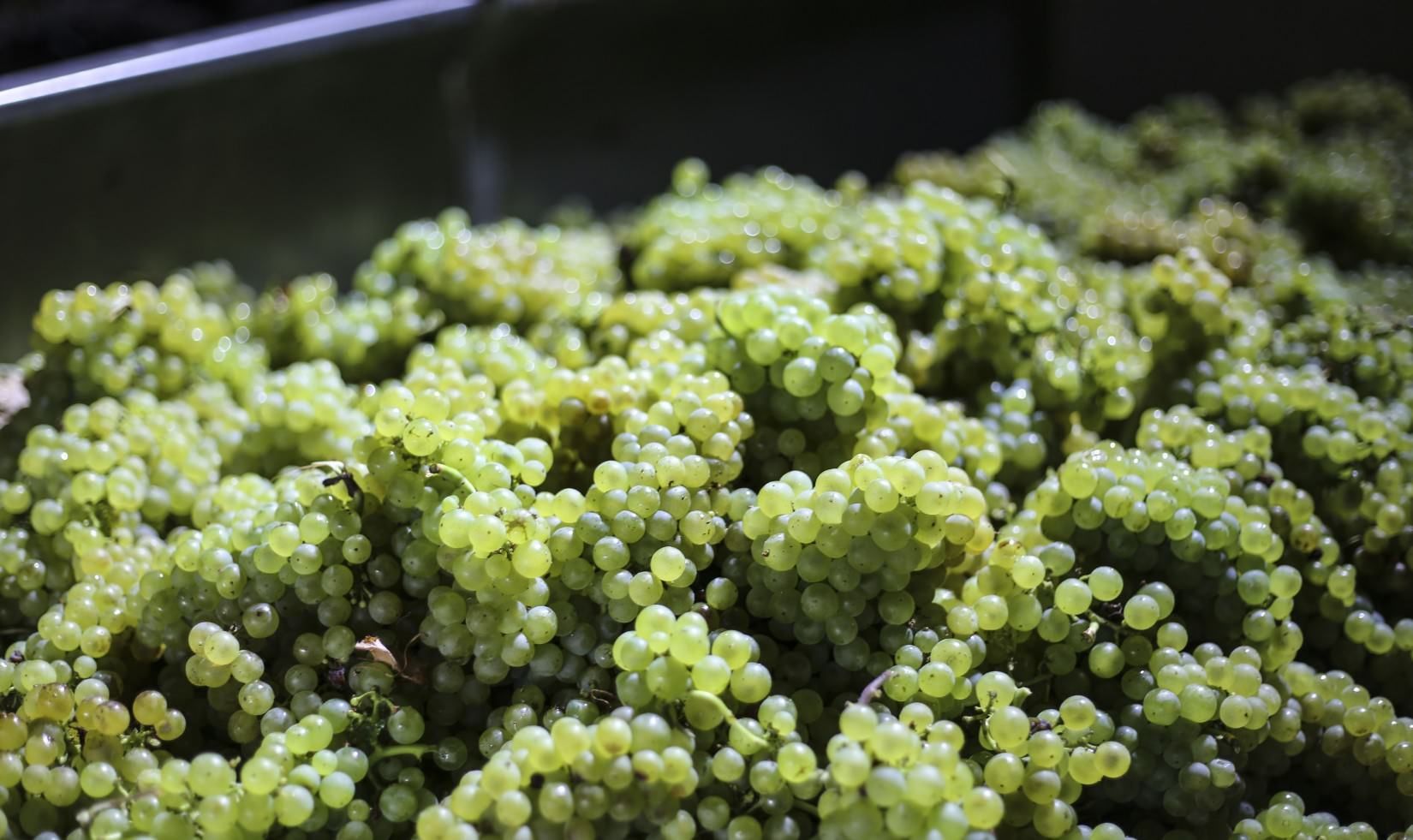
All fruit was handpicked in the coolness of the night and early morning hours before sunrise, beginning on September 5, more than a week earlier than 2013. By September 14, our Russian River Chardonnay harvest was complete. The lack of sunburn on the fragile skins of the Chardonnay grapes was truly remarkable. Winemaker Rob Davis puts the quality of the 2014 vintage thus far on par with the excellent 2013 vintage—almost as good as the exemplary 2012 vintage. Sugar levels in 2014 hovered around 23% Brix for Chardonnay grapes, which is ideal for the balanced, lower-alcohol style of wine. These pristine clusters were pure and delicious from the minute the grapes met the press. 2014’s bright, stone-fruit flavors have the kind of elevated intensity that makes for a dream vintage.
